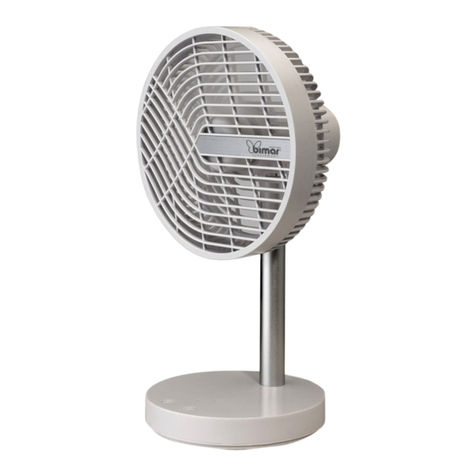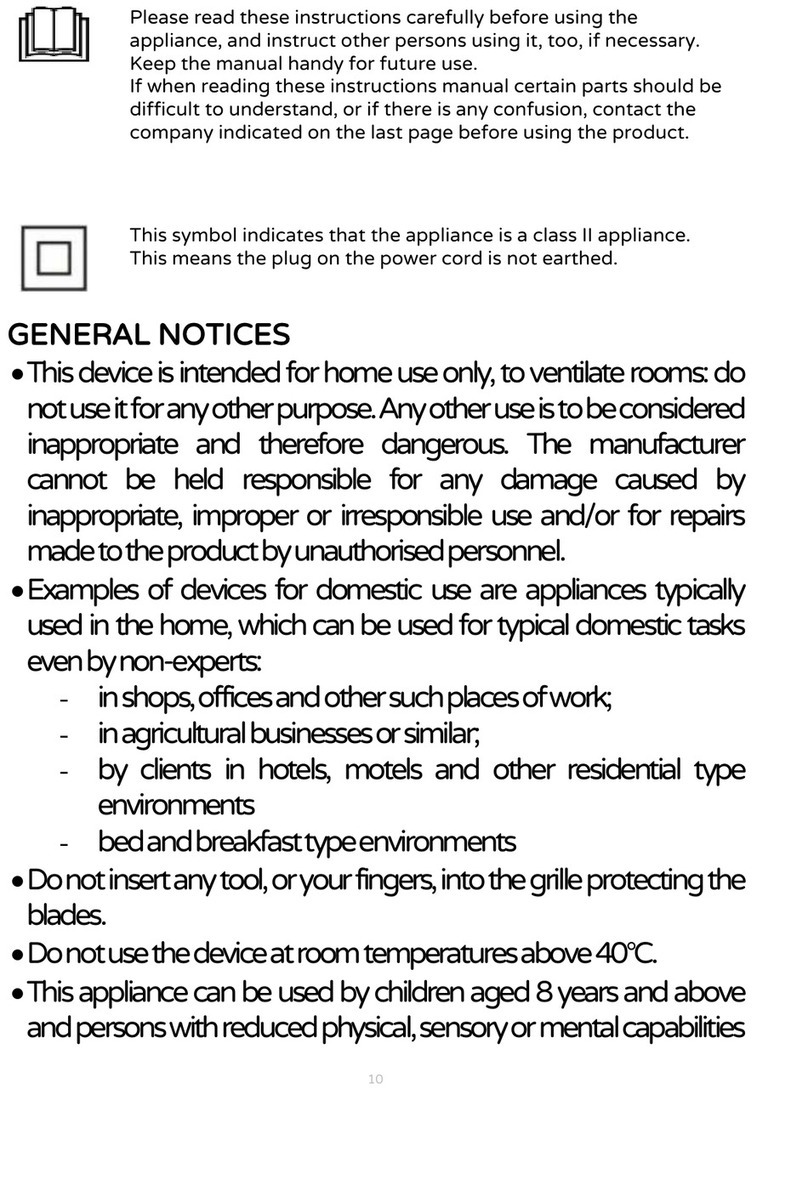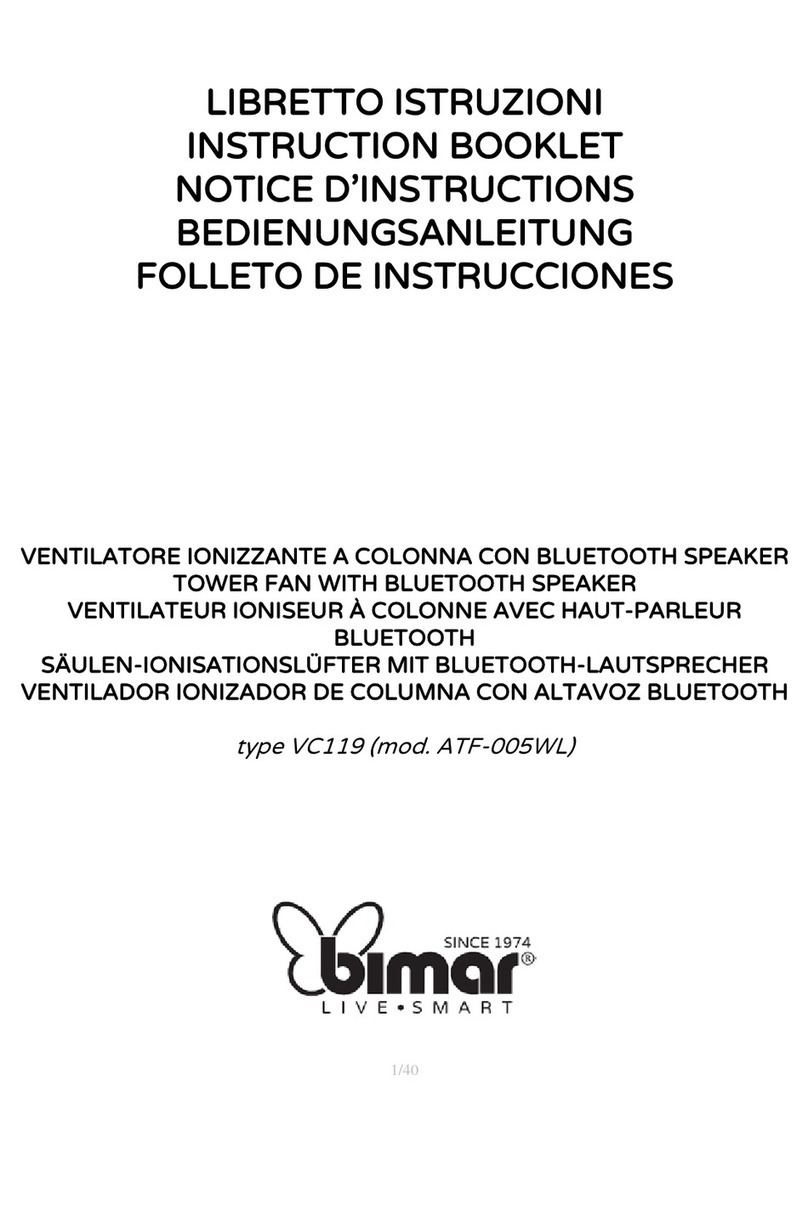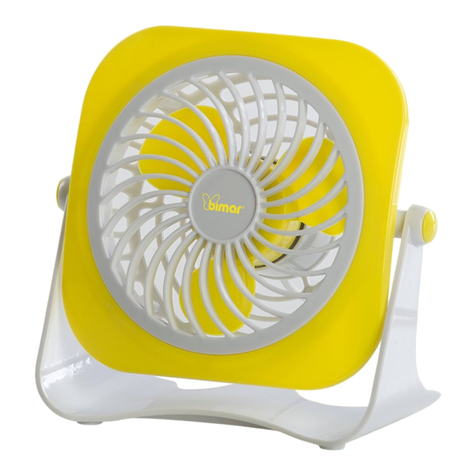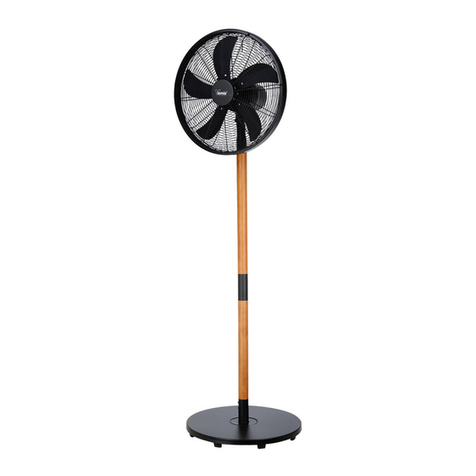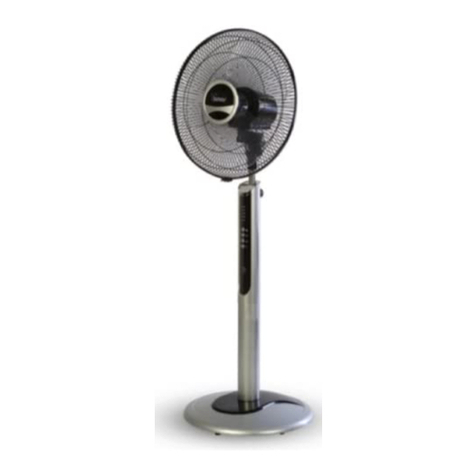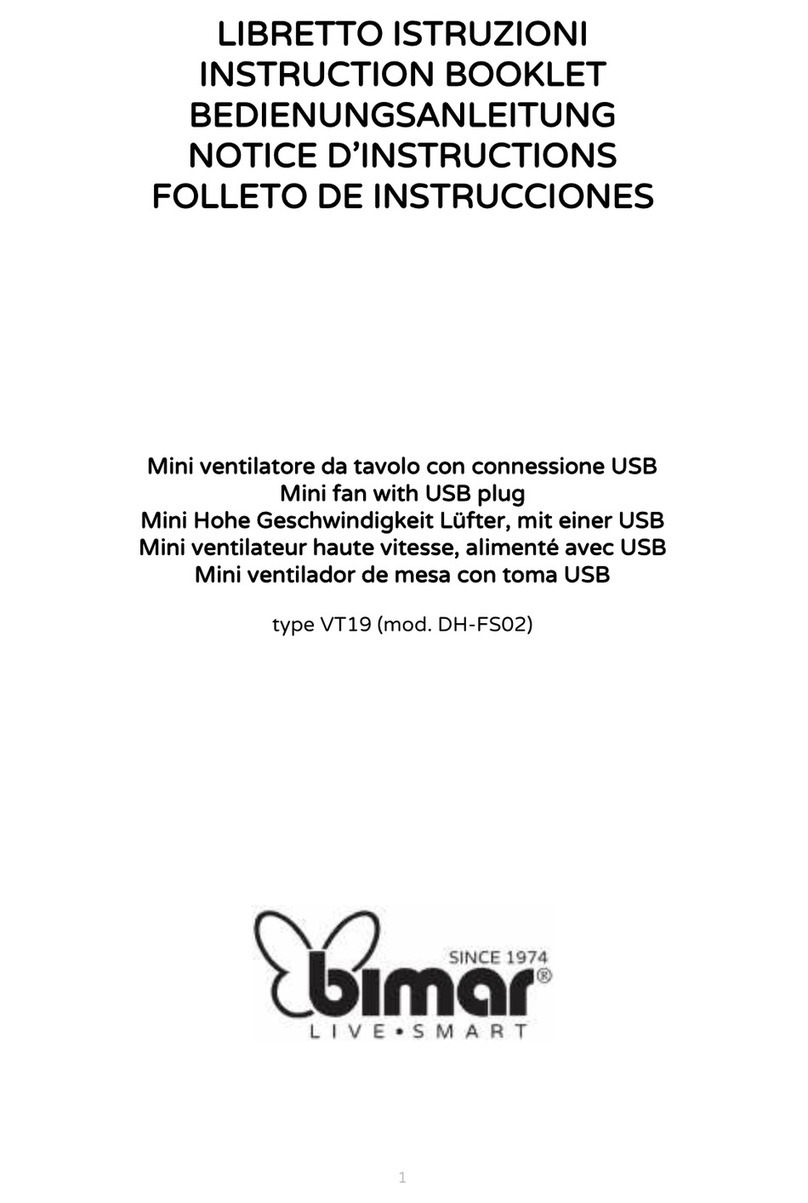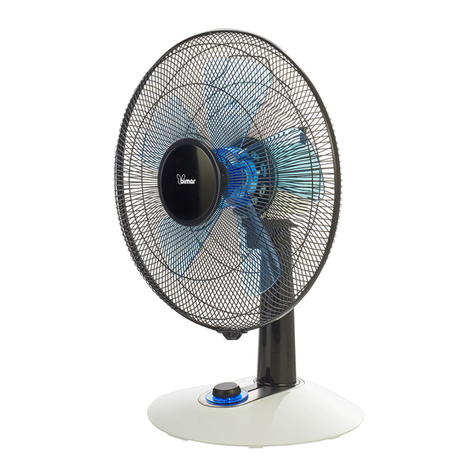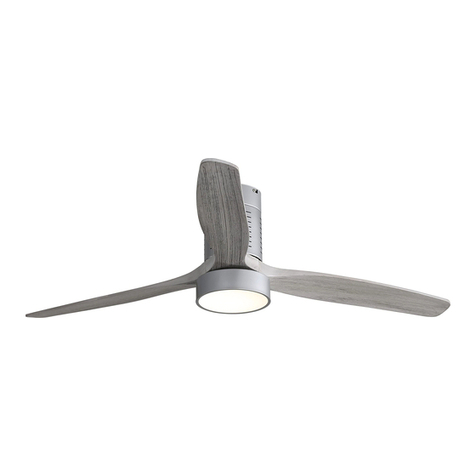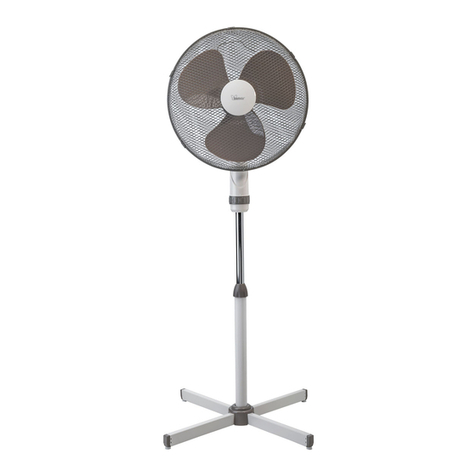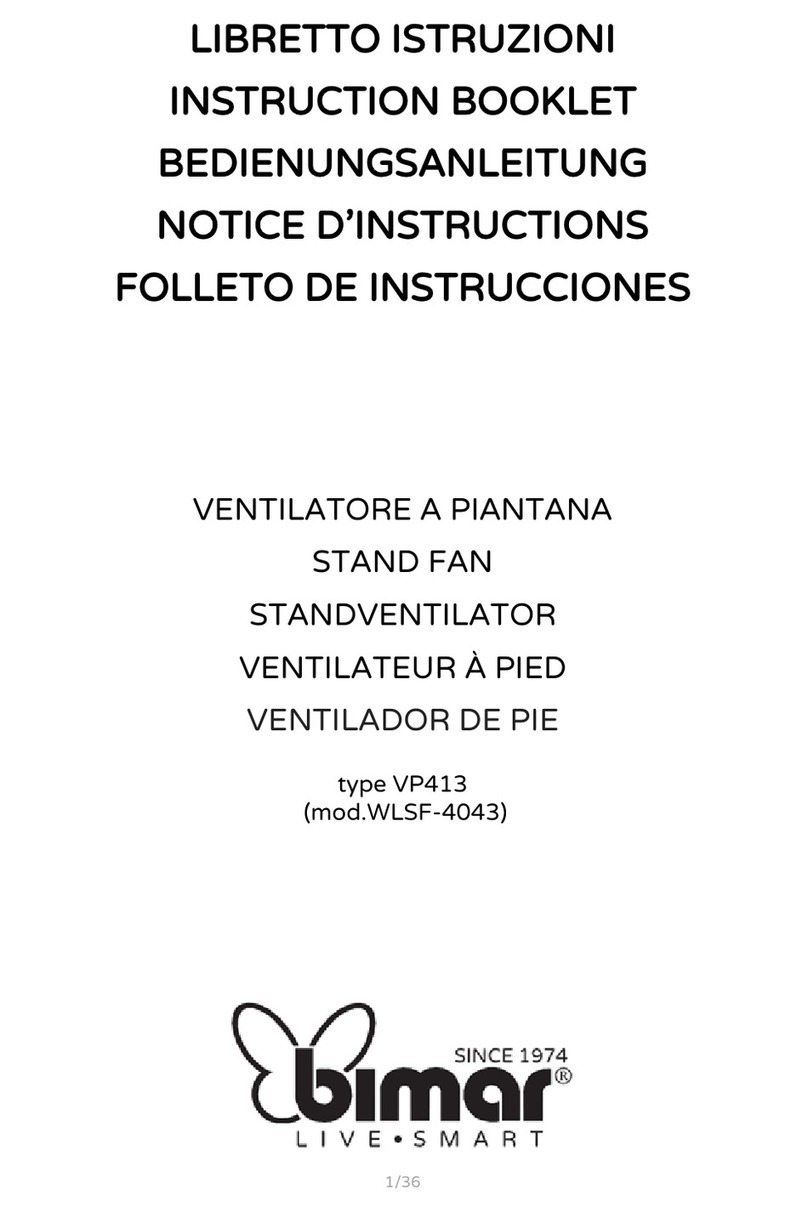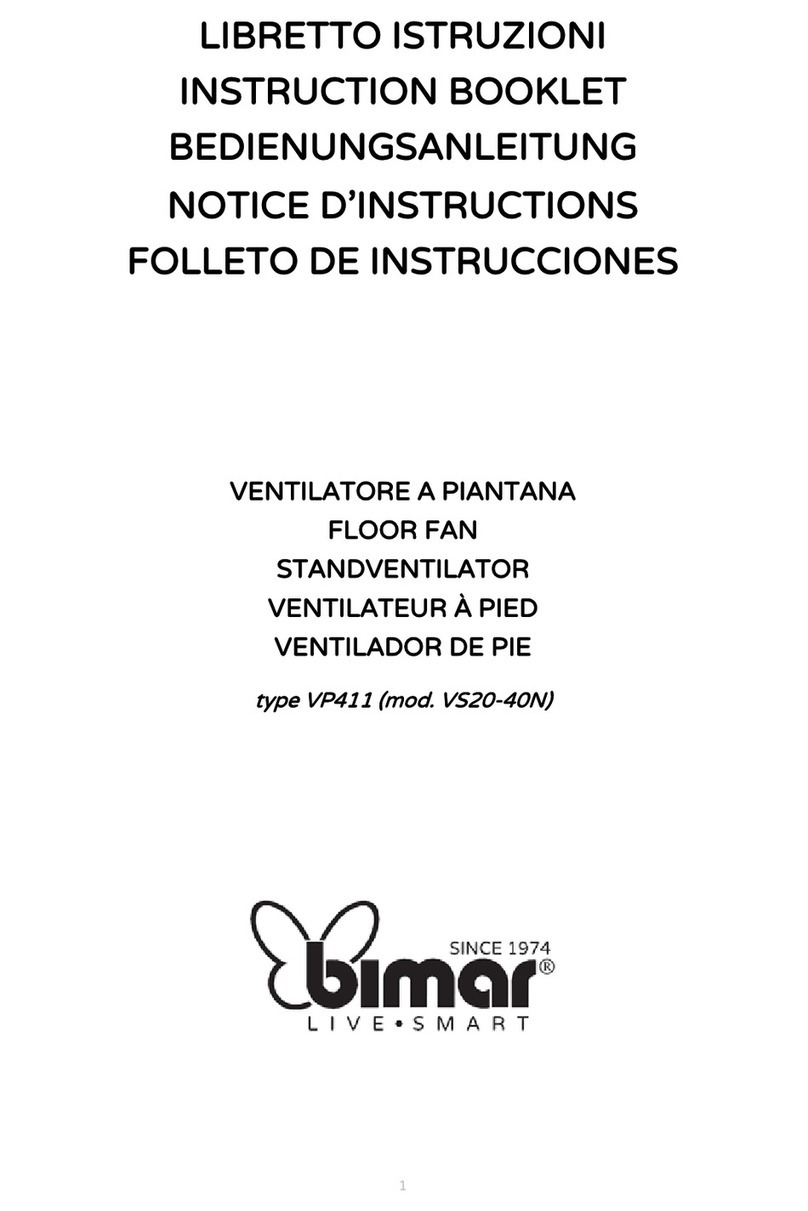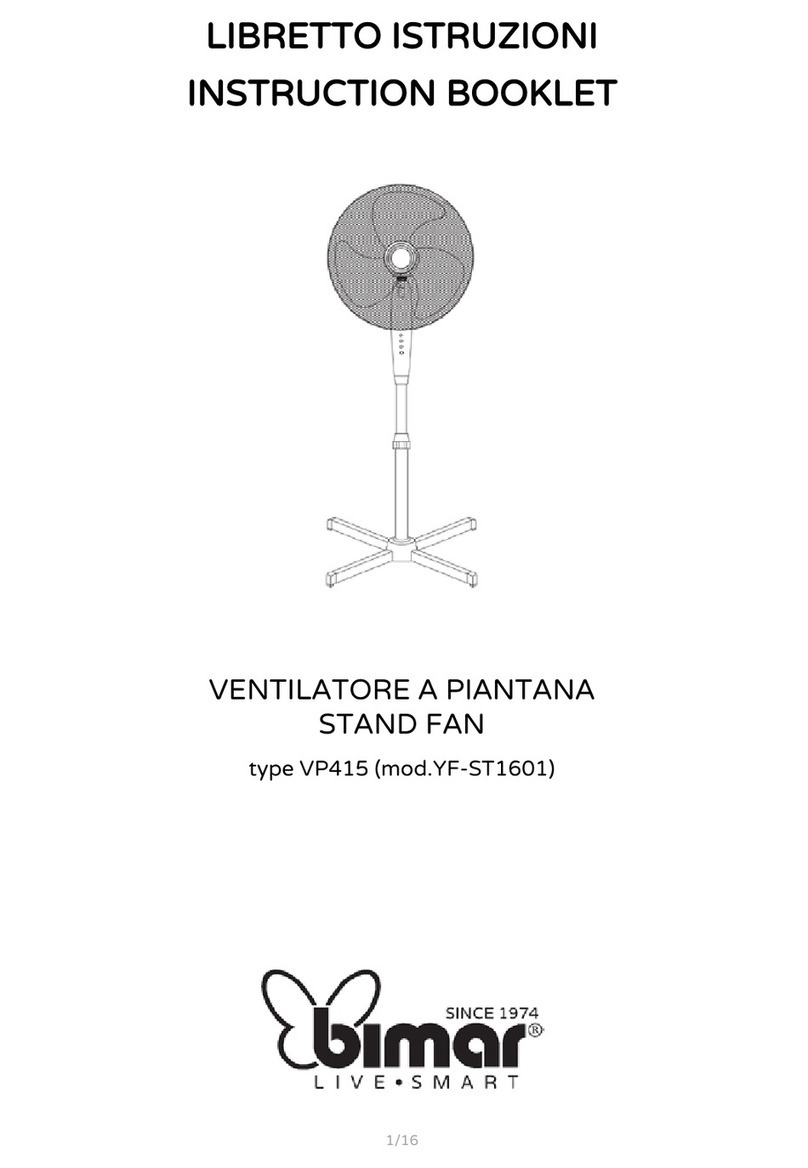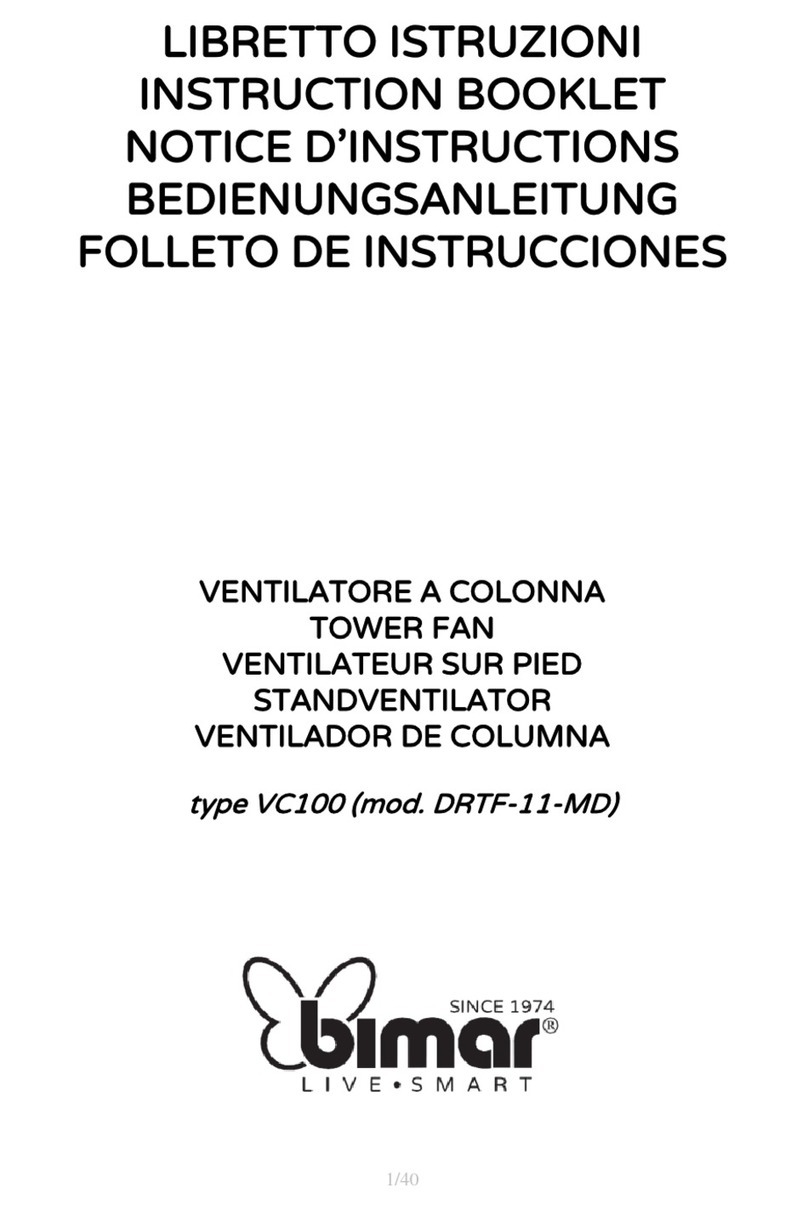6/32
USO
Prima di ogni utilizzo verificare che l’apparecchio sia in buono stato, che il cordone
elettrico non sia danneggiato: se il cavo di alimentazione è danneggiato, esso deve
sostituito dal costruttore o dal suo servizio assistenza tecnica o comunque da una
persona con qualifica similare, in modo da prevenire ogni rischio.
Inserire la spina nella presa di corrente.
Ventilazione: selezionare la velocità desiderata mediante i tasti appositi (9):
1 –Velocità minima 2 –Velocità media 3- Velocità massima
Per spegnere il ventilatore premere il tasto “0” e successivamente togliere la spina
dalla presa di corrente.
Oscillazione orizzontale (destra-sinistra): si ottiene premendo l’apposito
pulsante (6) situato sul corpo motore. Per eliminare il movimento e mantenere
fermo il ventilatore, sollevare il pulsante.
Inclinazione verticale (alto-basso): si regola impugnando il corpo motore e
dirigendolo nella direzione desiderata
Per lunghi periodi di inattività, togliere la spina dalla presa di corrente.
PULIZIA E MANUTENZIONE
Attenzione: prima di eseguire le normali operazioni di pulizia, togliere la spina
dalla presa di corrente.
Per la pulizia utilizzare un panno morbido, leggermente inumidito; non utilizzare
prodotti abrasivi o corrosivi.
Non immergere nessuna parte del ventilatore in acqua o altro liquido: nel caso
dovesse succedere non immergere la mano nel liquido ma per prima cosa togliere
la spina dalla presa di corrente. Asciugare con cura l’apparecchio e verificare che
tutte le parti elettriche siano asciutte: in caso di dubbio rivolgersi a personale
professionalmente qualificato.
E’ indispensabile mantenere i fori di aerazione del motore liberi da polvere e
lanugine.
Per periodi lunghi di inutilizzo, è necessario stivare il ventilatore al riparo da
polvere e umidità; consigliamo di utilizzare l’imballo originale.
Se si decide di non utilizzare più l’apparecchio, si raccomanda di renderlo
inoperante tagliando il cavo di alimentazione (prima assicurarsi d’aver tolto la
spina dalla presa di corrente), e di rendere innocue quelle parti che sono
pericolose qualora utilizzate per gioco dai bambini (ad esempio l’elica).
Avvertenze per il corretto smaltimento del prodotto ai sensi della Direttiva
Europea direttiva 2011/65/UE.
Alla fine della sua vita utile il prodotto non deve esser smaltito insieme ai rifiuti
urbani.
Può essere consegnato presso gli appositi centri di raccolta differenziata predisposti
dalle amministrazioni comunali, oppure presso i rivenditori che forniscono questo
servizio.
Smaltire separatamente un elettrodomestico consente di evitare possibili
conseguenze negative per l’ambiente e per la salute derivanti da un suo
smaltimento inadeguato e permette di recuperare i materiali di cui è composto al
fine di ottenere un importante risparmio di energia e di risorse. Per rimarcare
l’obbligo di smaltire separatamente gli elettrodomestici, sul prodotto è riportato il
marchio del contenitore di spazzatura mobile barrato. Lo smaltimento abusivo del
prodotto da parte dell’utente comporta l’applicazione delle sanzioni amministrative
previste dalla normativa vigente.








